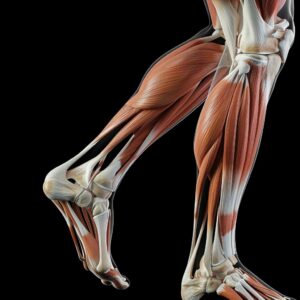
Achilles Tendinopathy Rehabilitation: Steps to Recovery
Achilles tendinopathy is a common condition that affects athletes, runners, and those who engage in regular physical activity. Characterized by pain, sometimes swelling, and stiffness in the Achilles tendon, it can significantly impact the ability to perform daily activities and sports. Achilles Tendinopathy can take a long time to resolve, the good news is that with proper thorough rehabilitation, full recovery can be made.
Here’s a brief guide to understanding and managing Achilles tendinopathy rehabilitation.
Understanding Achilles Tendinopathy
Achilles tendinopathy refers to the degeneration of the Achilles tendon, the band of tissue connecting the calf muscles to the heel bone. It typically arises from overuse, or sudden increases in physical activity. Unlike tendinitis, which involves inflammation, tendinopathy involves a series of microtears that weaken the tendon over time.
Symptoms of Achilles Tendinopathy
– Pain and stiffness along the Achilles tendon, especially
in the morning or after periods of rest.
– Swelling and thickening of the tendon.
– Pain that worsens with activity and eases with rest.
– Decreased range of motion in the ankle.
Steps to Rehabilitation
1. Initial Rest
When you first experience symptoms, it’s crucial to rest the tendon to allow the sensitivity to settle down. Avoid activities that exacerbate the pain, such as running, jumping, or dynamic gym exercises.
2. Pain Management
Ice can be used to reduce pain, if you find this helps symptoms. Over-the-counter pain medications, such as ibuprofen, can also help manage pain and inflammation.
3. Gentle Stretching and Mobility Exercises
Once the acute pain subsides, begin with gentle stretching exercises to improve flexibility if there has been a noticeable reduction range of movement. Stretching should not be performed at this stage for an insertional achilles tendinopathy. Get in touch if you need to assess this. Here are a few to get started:
– Calf Stretch:
Stand facing a wall with one foot in front of the other. Keep your back leg
straight and heel on the ground as you lean forward into the wall.
– Achilles Tendon Stretch:
Sit on the floor with your legs straight out. Loop a towel around
the ball of your foot and gently pull it towards you, keeping your knee
straight .
4. Strengthening Exercises
Strengthening the calf muscles can help support the Achilles tendon and prevent future in juries. There are different approaches to strengthen the achilles; isometric exercises, heavy and slow reps, and eccentric exercises are all commonly prescribed. The key is
for a strength program that is dosed appropriately for the individual and that
is gradually progressed in intensity.
A common exercise is the Heel Drop:
– Stand on the edgeof a step with your heels hanging off.
– Slowly lower your heels below the step level.
– Raise your heels back to the starting position.
This can be progressed in many ways; by adding weight, increasing reps, changing from double to single leg.
5. Gradual Return to Activity
As your strength and flexibility improve, gradually reintroduce activities that you enjoy. Start with low-impact exercises such as swimming or cycling before progressing to
running or other high-impact sports. To prepare for the demands of running,
plyometric, or, explosive gym exercises can be used to expose the tissue to the
kind of forces that running will place upon it. When returning to running many
people find the 10% rule useful to follow: increase your activity level by no
more than 10% each week to avoid overloading the tendon.
6. Monitor Your Progress
Keep track of your symptoms and progress throughout your rehabilitation. Remember that rehabbing achilles tendinopathies can take a long period of time, and the process is not always straight forward. If you experience a return of significant pain or swelling, reduce your activity level and consult a healthcare professional.
7. Seek Professional Help
If your symptoms persist despite self-rehabilitation efforts, it’s essential to seek help from a physiotherapist or sports therapy specialist. They can provide a tailored
rehabilitation program, assess your activity levels, and create a treatment/training plan that gives you the best possible pathway to recovery.
Conclusion
Recovering from Achilles tendinopathy requires patience, dedication, and a well-structured rehabilitation program. By following these steps and listening to your body, you can overcome this condition and return to your favourite activities stronger than before. Remember, the key to successful rehabilitation is consistency and gradual progression. Stay committed to your recovery plan, and you’ll be back on your feet in no time.
If you are suffering from achilles tendinopathy, why not
reach out to use at CENTRAL THERAPY and we will be happy to help.
References
4. Cook JL, Khan KM, Purdam C. Achilles tendinopathy. Man
Ther. 2002 Nov;7(4):191-9.


